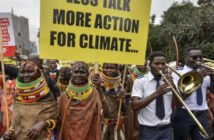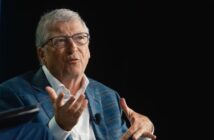As the United States, France and the United Kingdom justifies to the world the strikes on Syria over the use of chemical weapons on its people and Russia, Iran and Syria on the other side continue to deny the use of chemical weapon, labeling the strikes an unwarranted aggression. The war in Syria has been ongoing for seven years, military and diplomatic solution have failed to stop the debacle. How did Syria get here?
Seven years of horrific twists and turns in the Syrian Civil War make it hard to remember that it all started with a little graffiti.
In March 2011, four children in the southern city of Der’a scrawled on a wall “It’s your turn, Doctor”— a not so subtle prediction that the regime of Syrian President Bashar al-Assad, a British trained ophthalmologist and self-styled reformer, would go down in the manner of the Ben Ali regime in Tunisia, the Mubarak regime in Egypt, and eventually, the Qaddafi regime in Libya. But Syria’s story would turn out differently.
The crackdown started small. Assad’s security services arrested the four graffiti artists, refusing to tell their parents where they were. After two weeks of waiting, the residents of Der’a—who are famously direct and fiery—held protests demanding the children’s release. The regime responded with live gunfire, killing several, and drawing the first blood in a war that’s now killed some half a million people. With every funeral came more opportunities for protests—and for the regime to respond with more violence.
The protests quickly spread to other towns and cities—Homs, Damascus, Idlib, and beyond—engulfing what is nominally still the Syrian Arab Republic in flames. The underlying dynamic that drove the Arab uprisings—a rapidly growing youthful population and a rigid repressive regime incapable of change—was consistent across a number of countries. But the effects varied widely, and nowhere were they more ferocious than in Syria, where early hopes that Assad would go the way of other dictators have crumbled in the ruins of Syria’s ancient cities and the shattered lives of its people.
Decision-makers in Western capitals had long viewed the Assad regime as a grim model of Middle Eastern stability, but in 2011, they suddenly thought that “people power” would bring down Assad as it had other Arab despots. The Assad regime, however, had something the others didn’t. “Popular resistance” strategies work well against authoritarian systems whose leadership come from the country’s ethnic and sectarian majority, such as Egypt. Soldiers ordered to turn their guns on protestors are faced with a choice: Shoot their brethren among the protestors, or help get rid of those ordering them to do so. This causes a split in the army and security services, which can lead to a toppling of the government.
Assad’s, by contrast, is a minority government with a kind of fortress of sectarian interests around it. Minority Alawites serve at the core, followed by concentric rings of other minorities (Christians, Shia, etc.), and finally by coopted Sunnis who represent the majority in Syria. Minority army and security officers are therefore farther removed from the majority Sunni population, making them more likely to order fire against protestors than to topple their brethren in power. This has galvanized the Assad regime against the kind of splits that toppled Ben Ali and Mubarak.
The uprising had morphed into a civil war. So when in the summer of 2012 Russia and the United States offered a transition plan to help stop the violence, both sides dismissed it, each one believing it could defeat the other militarily. If anything, it looked like the rebels were gaining the upper hand; one group managed to seize half of Aleppo, Syria’s largest city and industrial center, that July. At that point the pattern was set: When the regime faced serious losses, it resorted to extreme measures. In Aleppo Assad’s forces resisted, holding onto the western side of the city and firing Scud missiles at rebel bases—becoming the second largest user, after Najibullah in Afghanistan, to deploy these weapons against their own people. Death tolls and refugee outflows spiked.
As the war rages on, in comes Islamic State, ISIS, a brutal terrorists group. Millions of Syrians fled the country, with many fleeing beyond neighboring Turkey onward to Europe. Over 55,000 Syrians were killed in 2015 alone, bringing the overall total for the conflict to over a quarter million, with an estimated 100,000 more undocumented deaths.
The United States, now saddled with defeating ISIS and supporting the Syrian opposition, buckled. It engaged both Russia and Iran in an attempt to establish ceasefires and talks to end the war—even as Russia continued to pound rebel positions, allowing what was left of Assad’s army and an array of Iranian-sponsored militias, including Hezbollah to push the rebels back. By summer 2016, this hybrid force surrounded and pulverized east Aleppo. And the U.S. was meanwhile seeing one of its allies challenged by another, as Turkey effectively invaded Syria to block U.S.-backed and Kurdish-dominated forces from consolidating their territory. Americans were focused on the outcome of the 2016 presidential election; Syrians, though, were focused on fleeing, with an estimated 11 million—half Syria’s prewar population—on the run either in neighboring countries or inside Syria. Aleppo fell by late December, sending thousands of oppositionists into Idlib province, where many pro-Assad commentators claimed they would be corralled for slaughter.
The strike on Friday was described by the US Secretary of Defense James Mattis as a “one-off” meant to deter the use of chemical weapons. The war is now arguably the world’s largest humanitarian disaster since World War II. The death toll now stands at nearly half a million, though the UN has stopped counting. Countless others are wounded and missing. A U.S. government report that the Assad regime is using a crematorium near the Saidnaya Prison outside Damascus indicates many of their remains may never be found. The UN High Commissioner for Refugees estimates 13.1 million Syrians are in need of humanitarian assistance, with more than 6 million internally displaced and 5 million registered as refugees. Hundreds of thousands more remain unregistered.
The situation in Syria has several ramifications; Israel, worried about the spike in Iranian militias and influence, Saudi Arabia against Iran, Sunnis versus the Shiites, Russia against the West, Turkey against the Kurds and other ethnic issues within Syria. With visible signs of conflagrations around Syria, the negotiations in Geneva and elsewhere have yet to produce viable ceasefires or anything resembling a political settlement.
Like the civil war in neighboring Lebanon, the Syrian Civil War now threatens to morph into the Syria War—a regional conflagration which seems likely to burn for a generation. And civilians are cursed to live it, and die in it, every day.
Source: The Atlantic




